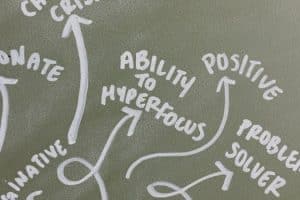Student Development: Whole Child Approach
In today’s education system, student development has become a crucial aspect for ensuring the overall growth and success of students. School is not just a place for academic learning, but it also plays a vital role in the holistic development of a child. With the increasing emphasis on the overall development of students, the concept of “Whole Child Approach” has gained significant attention. This approach focuses on nurturing a student’s physical, emotional, social, and cognitive skills to help them become well-rounded individuals. In this article, we will dive deeper into the concept of Student Development: Whole Child Approach and its importance in today’s educational landscape.
The Concept of Whole Child Approach
The Whole Child Approach is based on the belief that every child deserves an education that supports their overall growth and development beyond just academic success. It recognizes that a child’s physical, emotional, and social well-being has a significant impact on their academic performance. This approach aims to create a learning environment that nurtures a child’s overall well-being and focuses on their individual strengths and needs. It is an all-encompassing approach that acknowledges the interconnectedness of various aspects of a child’s development.
Physical Development
Physical development is a crucial aspect of a child’s overall development. By supporting their physical growth, we not only ensure their well-being but also set a strong foundation for their mental and emotional development. The Whole Child Approach focuses on providing students with a safe and healthy learning environment that encourages physical activity and healthy habits. Incorporating sports and physical activities in the curriculum can have a significant impact on a child’s physical development.
Emotional Development
Emotional development plays a vital role in shaping a child’s personality and behavior. The Whole Child Approach encourages schools to create a supportive and nurturing environment that promotes emotional well-being. By understanding and addressing a child’s emotional needs, schools can help them build resilience, manage emotions, and develop healthy relationships. This approach also promotes the inclusion of social and emotional learning in the curriculum to equip students with essential life skills.
Social Development
Social development is all about building healthy relationships and developing effective communication skills. A child’s social development has a significant impact on their academic success and overall well-being. The Whole Child Approach focuses on creating a culture of community and collaboration within the school. By encouraging students to work in groups, participate in extracurricular activities, and engage in community service, schools can foster students’ social skills and create responsible citizens.
Cognitive Development
Cognitive development is a child’s ability to think, learn, and problem-solve. Schools play a crucial role in nurturing a child’s cognitive skills and preparing them for the future. The Whole Child Approach emphasizes on creating a curriculum that is challenging yet achievable for students. By providing a variety of learning experiences, schools can cater to the diverse needs and learning styles of students and foster their critical thinking, creativity, and problem-solving skills.
The Importance of Whole Child Approach
Implementing the Whole Child Approach in schools has numerous benefits for students, teachers, and the education system as a whole. By focusing on the holistic development of students, this approach can:
– Create a positive and inclusive learning environment: When students’ emotional and social needs are met, they feel safe and valued, thereby creating a positive environment for learning.
– Improve academic performance: By addressing students’ individual needs and providing a holistic education, the Whole Child Approach can improve academic performance and engagement.
– Develop well-rounded individuals: Students are encouraged to explore and develop their individual strengths and interests, making them more self-aware and confident individuals.
– Promote mental and emotional well-being: The Whole Child Approach aims to reduce stress and promote good mental health, leading to happier and healthier students.
– Prepare students for the future: By developing essential life skills, this approach prepares students to successfully navigate in the real world.
In Conclusion
A quality education not only focuses on academic excellence but also nurtures a child’s overall development. The Whole Child Approach is a step in the right direction to ensure that students receive a holistic education that prepares them for a successful future. It is a collaborative effort between schools, parents, and the community to create an environment that supports the growth and well-being of every child. As educators, it is our responsibility to embrace this approach and recognize the importance of developing the whole child, one student at a time.










